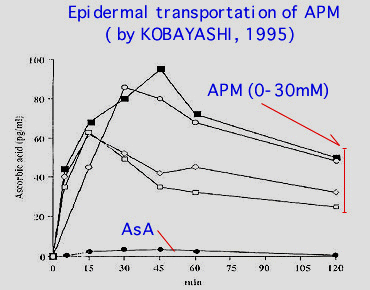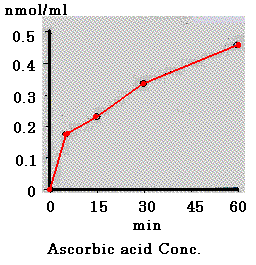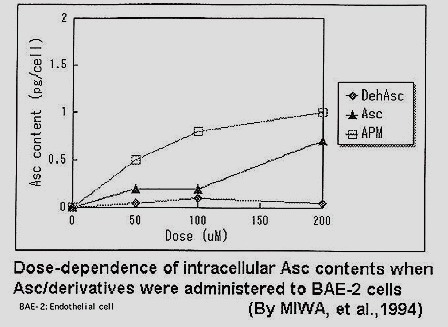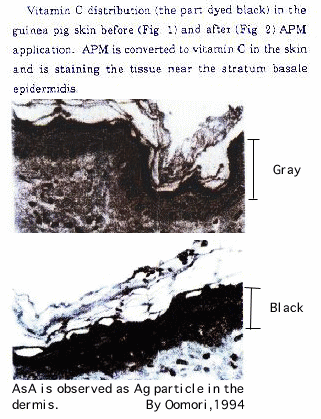
| @TOP b้ฦTvbOEMbAP5bAXRr__(๚{๊/p๊)bVCIPbvr^~bbgsbNbดฟคiXg|จโน |
 @@@@@
@@@@@| Jump to: | @(1)Structure and Appearance of APMb(2)Stability|(3)Whiteningb(4)Collagen Synthesisb(5)Absoption @(6)Antioxidation and Radical Trappingb(7)UV radiationb(8)Referencesb(9)E-Mail |
| iTjAbsorption |
APM is one of the vitamin C derivative, which is absorbed from the skin despite its water-soluble property and is converted to vitamin C by enzymes present in the skin tissue. |
กLink to Figure of Absorption of APM and AsA กLink to Figure of Absorption of APM and another AsA derivatives กLink to Method of Epidermal transportation test |
Result of epidermal transportation test  Conversion of APM to AsA in the Serum.  A recent in vitro study with endothelial cells has shown that the rate of intracellular absorption is several times higher with APM than with vitamin C.@It has also been demonstrated that the rate of percutaneous absorption is significantly higher with APM than with vitamin C.
Percutaneous Absorption and Effect on Guinea Pig Skin Collagen Synthesis of Ascorbic Acid Derivatives in Cosmetic Formulation. by T.Koyama, etc. This Fig. is distribution of vitamin c in the back skin of guinea pig applied percutaneusly APM lotion. VitaminC is observed as Ag particlein the dermis . |
| (6)Antioxidation and Radical Trapping |

